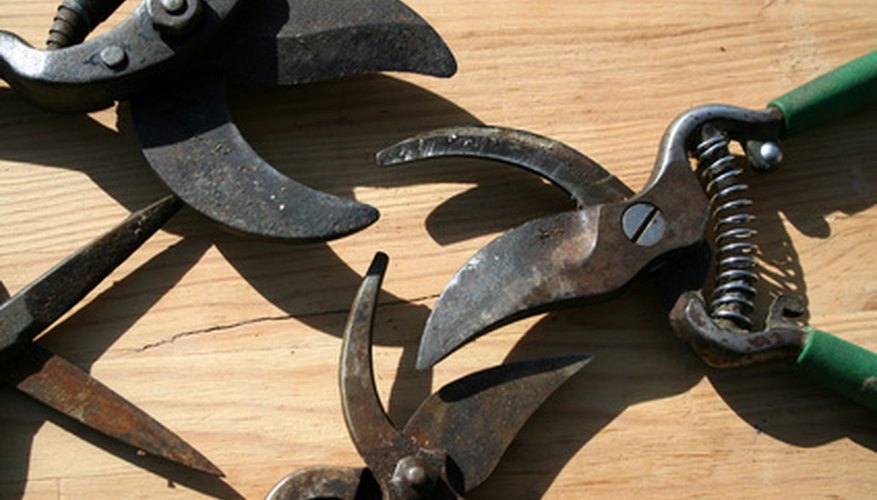Forest Pansy eastern redbud, known botanically as Cercis canadensis "Forest Pansy," is a mid-size understory tree that flowers dramatically and has distinctive heart-shaped foliage. The striking flowers are purple and cover the tree canopy for a few weeks in April or May each year before the leaves unfurl. The tree can be grown as a multi- or single-trunk tree, a basic pruning decision that should be made by the time the tree is just a year or two. According to the University of Florida, Forest Pansy redbud trees tend to have a problem with limbs breaking away, so judicious pruning is required to establish a branch architecture that can remain stable over time.
- Forest Pansy eastern redbud, known botanically as Cercis canadensis "Forest Pansy," is a mid-size understory tree that flowers dramatically and has distinctive heart-shaped foliage.
- According to the University of Florida, Forest Pansy redbud trees tend to have a problem with limbs breaking away, so judicious pruning is required to establish a branch architecture that can remain stable over time.
Prune your tree in the fall while the tree is in its dormancy. Alternatively, prune in the later spring after blooming has finished for the year.
Reduce the number of trunks to one when the tree is young, if desired. Preserve the strongest, largest and straightest trunk, pruning all the others down to the soil line. Remove all shoots and water sprouts from the soil and trunk for several years thereafter until no more sprout. Leave the trunks of multi-trunked specimens as they are.
Prune away all lateral branches that grow to become half the size of the trunk. This will prevent crotch and branch breakage that can permanently mar the tree and instigate disease. Thin the branches so that there is roughly 6 to 10 inches of space between all of the branches. This, too, will lighten the canopy and reduce strain on the branches.
Shrink the size and spread of the crown only when necessary to prevent entanglement of the branches with nearby power lines or structures. Reduce the length of the terminal branch tips with your shears as desired, never removing more than one-third of the tree canopy. Place your pruning cuts to maintain the natural shape of the canopy as much as possible to ensure an attractive, professional looking result.
- Prune away all lateral branches that grow to become half the size of the trunk.
- Shrink the size and spread of the crown only when necessary to prevent entanglement of the branches with nearby power lines or structures.
TIP
Use pruning loppers on branches that are 1/2 inch in diameter or smaller and a very finely toothed pruning saw on branches that are larger than 1/2 inch. The bark on these trees is delicate and can easily be compromised by disease at wound sites so you want clean cuts and no tearing of the bark during pruning.
